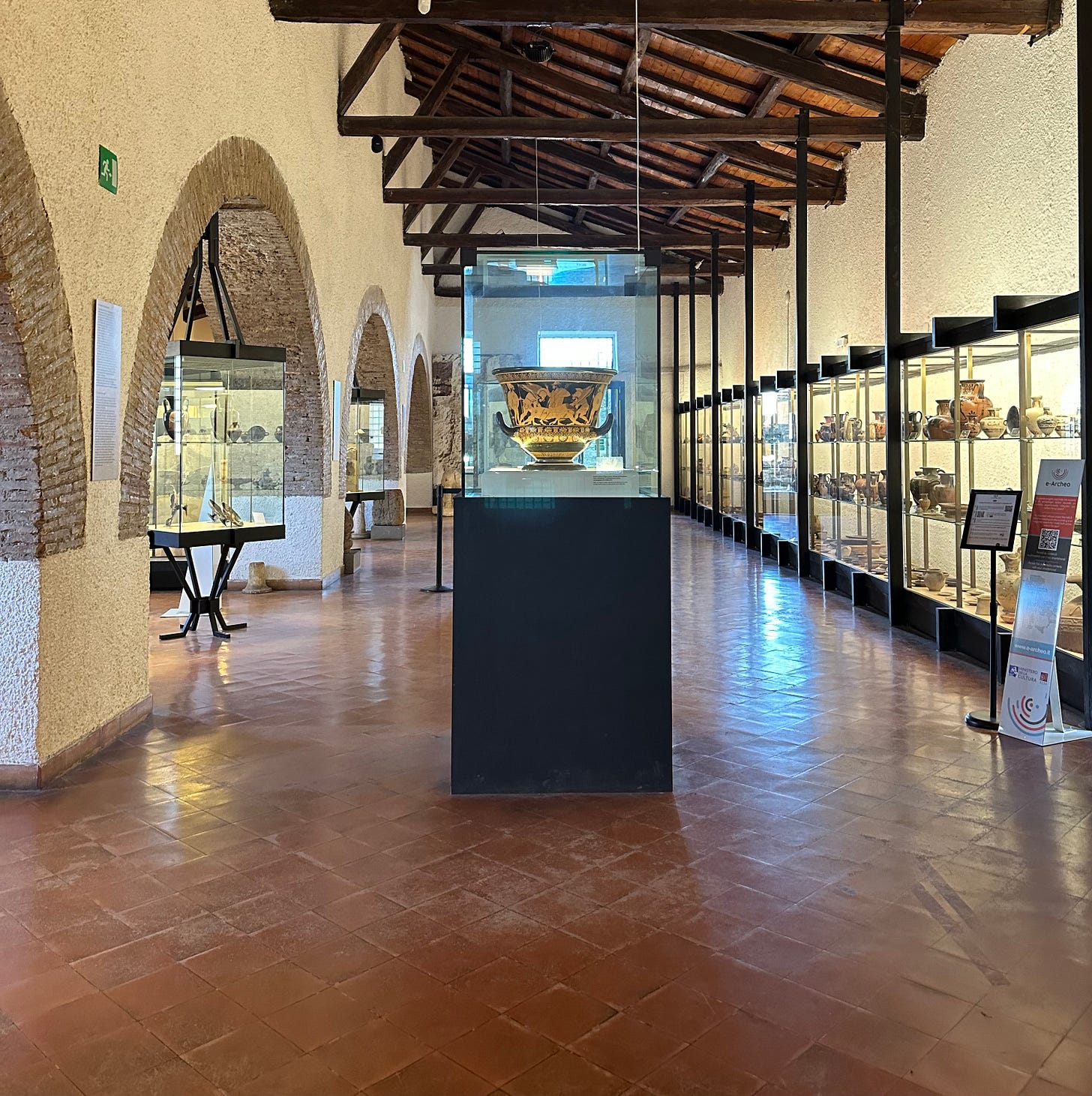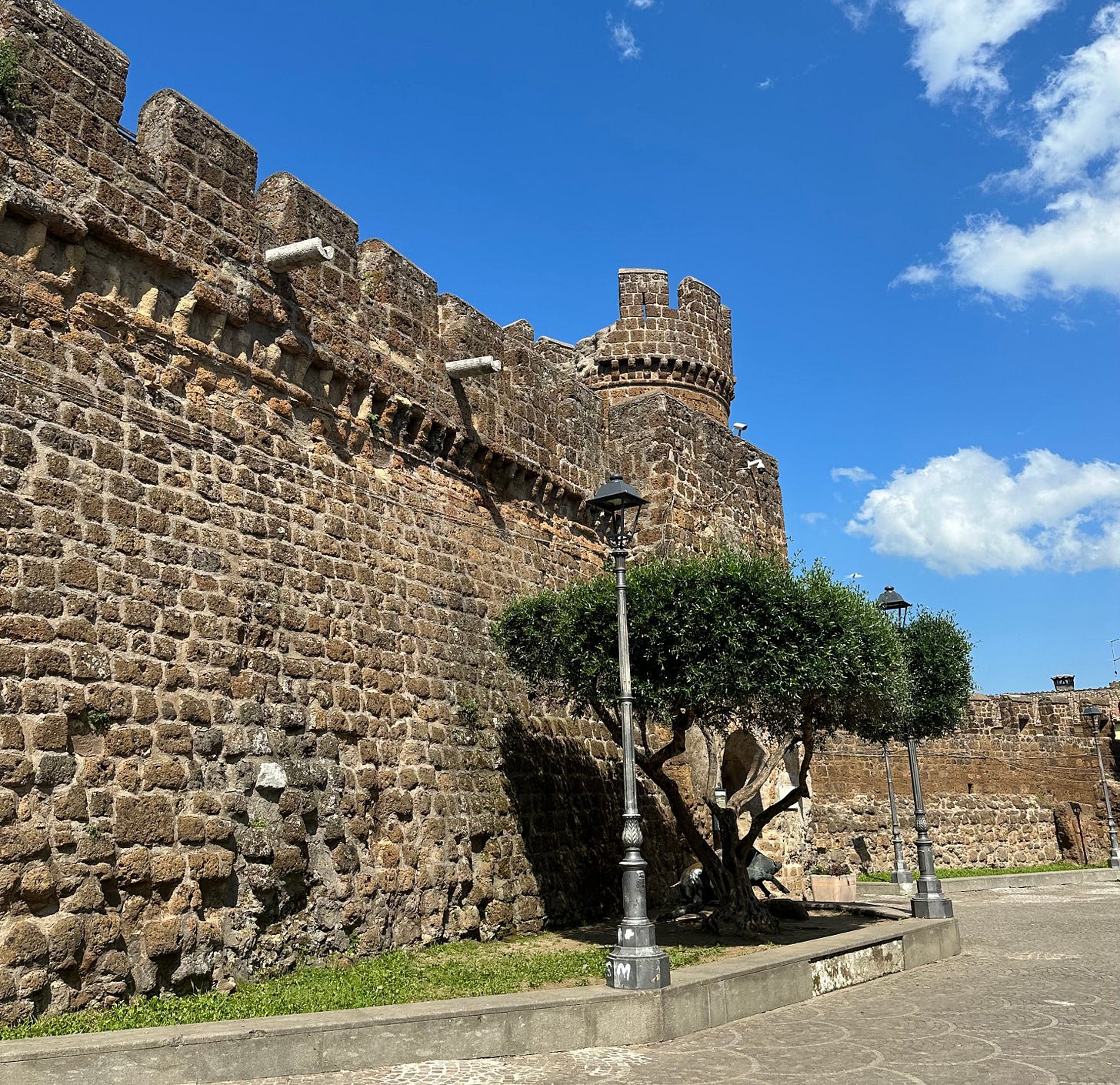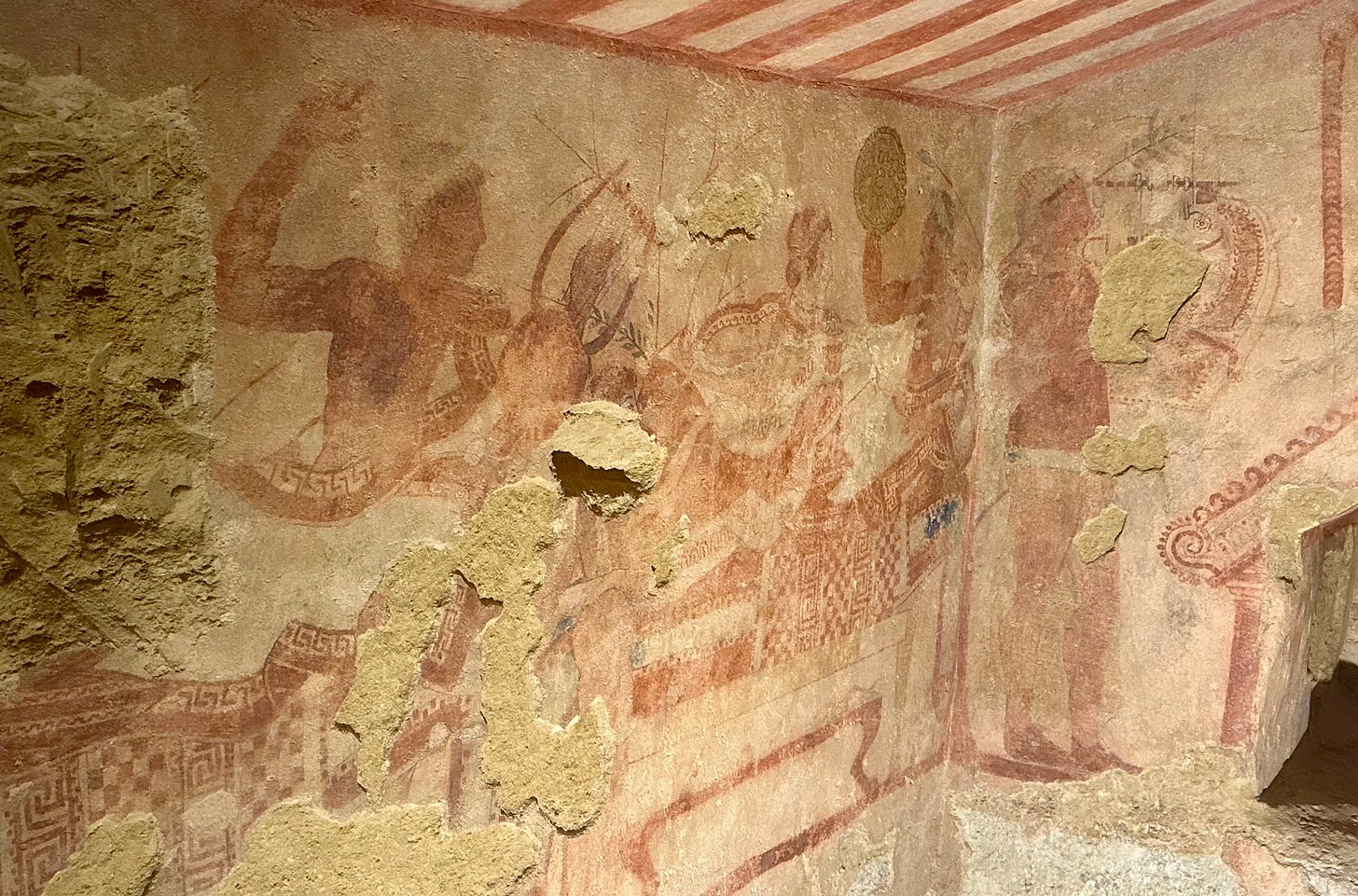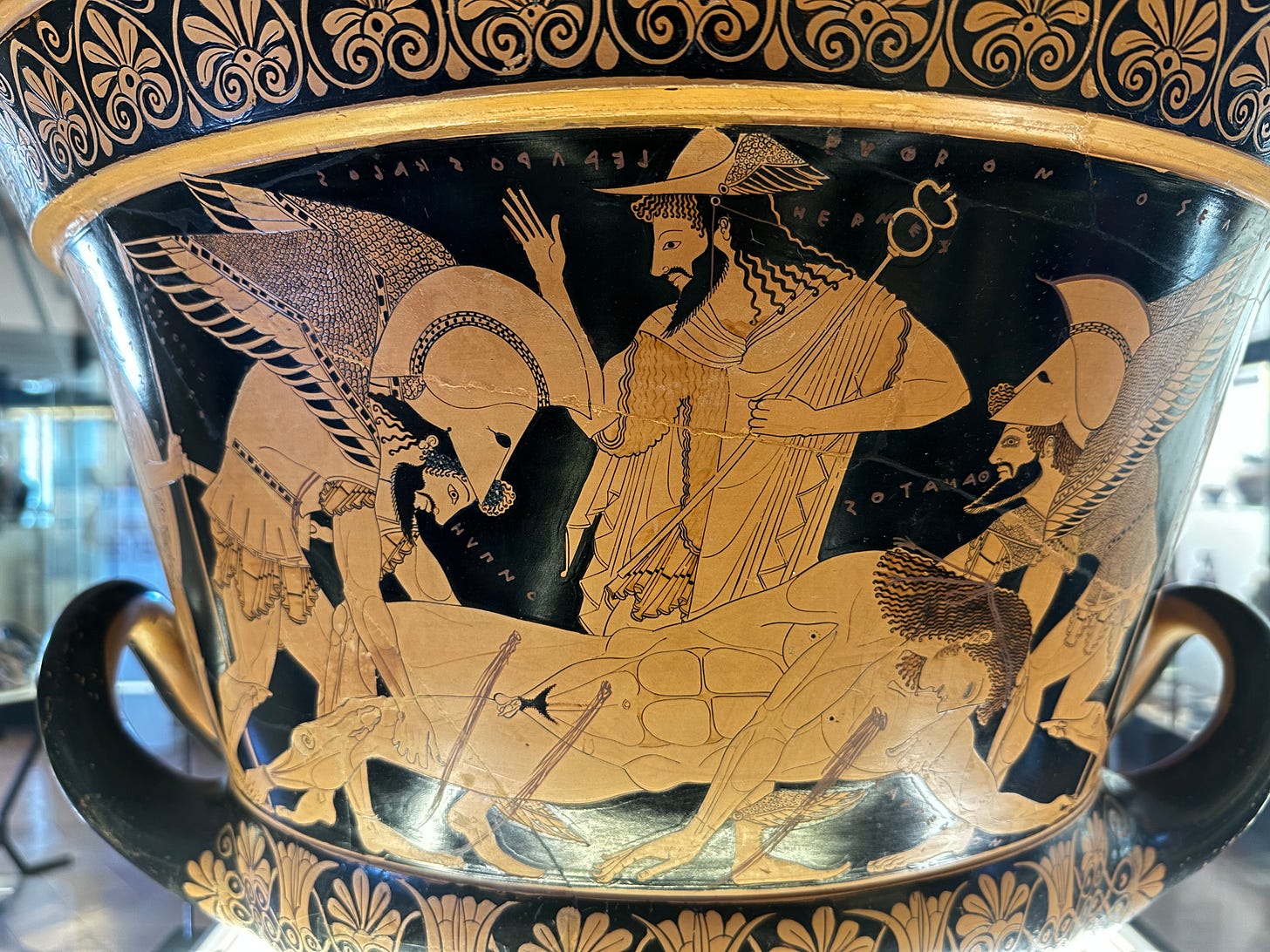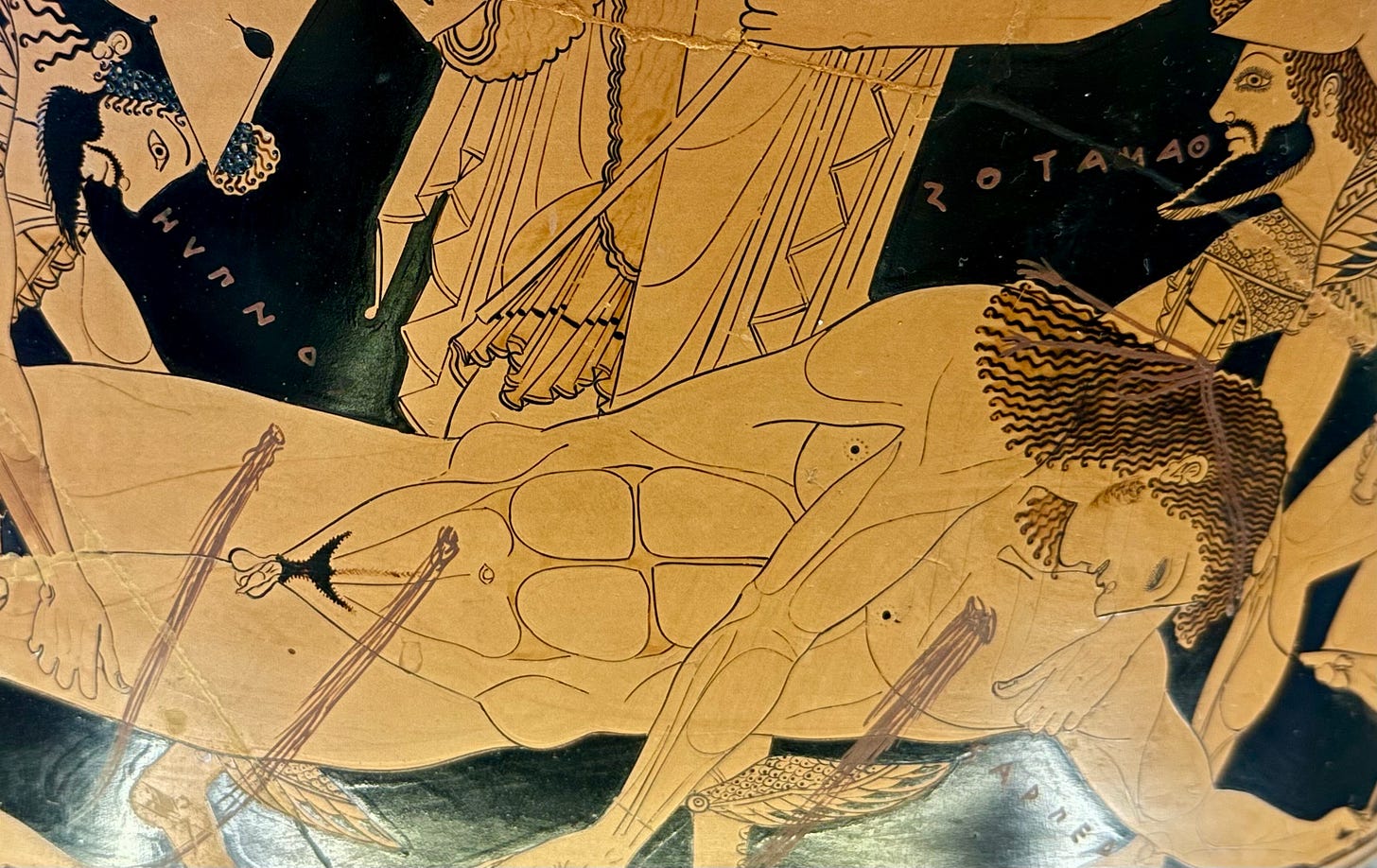In the quiet town of Cerveteri, forty minutes drive or so north-west of Rome where I like to take people for Etruscan-themed jaunts taking in ancient tombs and the Tyrrhenian, there is a bijou two-roomed archeological museum in part of a castle. I adore a small provincial Italian archeological museum so in my book that’s already quite enough to make it worth a visit. However the charms of Cerveteri’s museum don’t end there; in the middle of the upper room, quietly exuding its exquisiteness to occasional groups of local schoolchildren and the handful of visitors who make the journey from further afield, is one of the very finest Greek vases in existence.
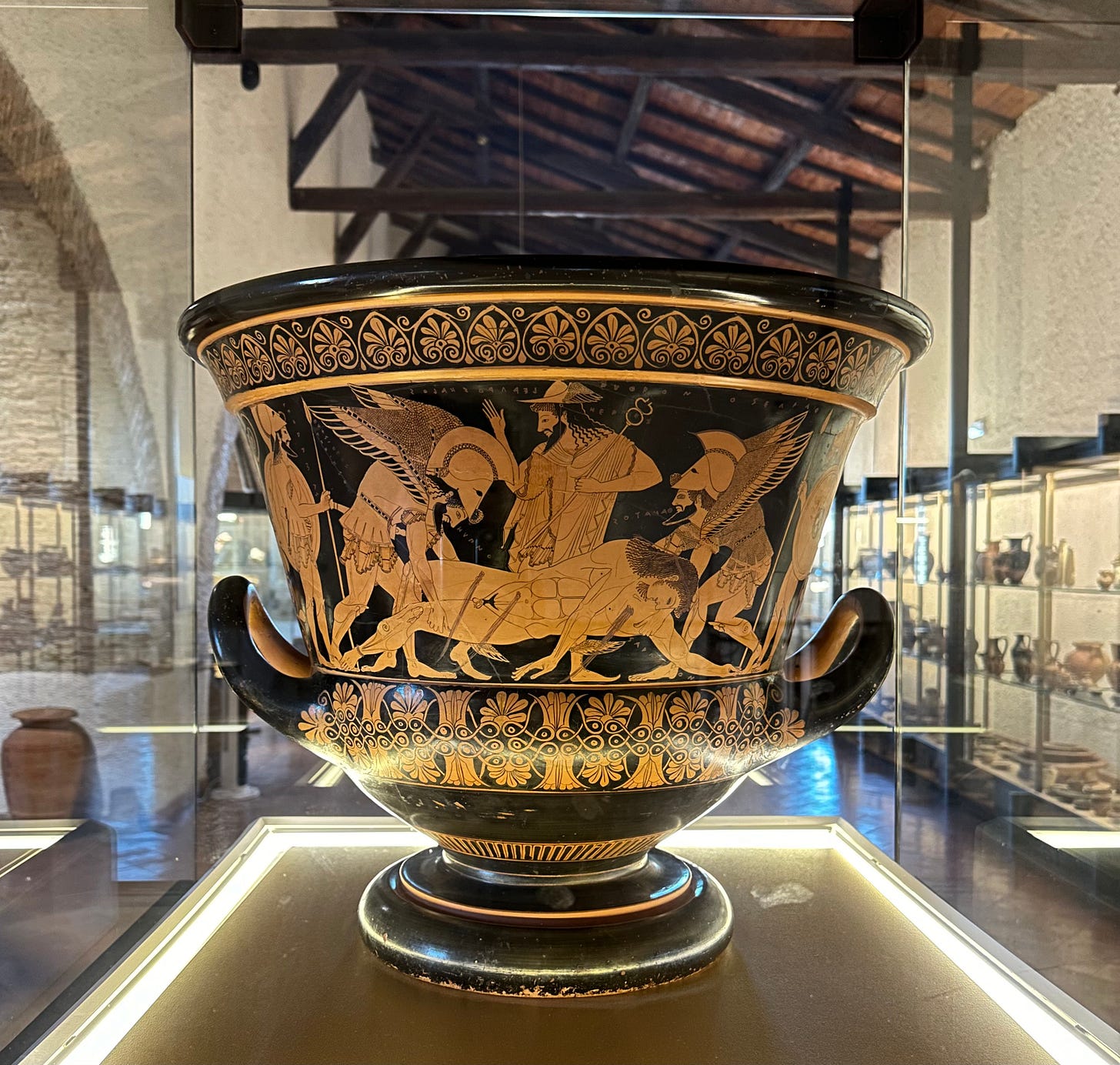
The Euphronios Krater, named for its renowned painter, is the only intact survivor among the twenty-seven pieces known to have been decorated by Euphronios. Active in Athens in the late sixth and early fifth centuries BCE, he was one of the artists now referred to as the “Pioneer Group” who were instrumental in the transition from black figure to the more refined red figure painting of ceramics. Indeed it is to these artists that we owe them the very word “ceramic”: from the area where they worked which was called Kerameikos, north-west of the Athenian Acropolis.
The artistic shift from black to red figures has been described as the first conscious European art movement and marked a change in the conception of figures painted on ceramics. Both use the three-phase firing technique, using a controllable kiln to limit oxygen during the second firing after the slip has been applied. This promotes the vitrification of the slip, creating a shiny black finish. Red figure painting simply inverted the form, with the black vitrified slip becoming the background and the exposed red of the pot itself being used for the figures. This allowed for more refined detail to be added in black, white, and deep red within these clay-coloured figures.
Around 515 BCE Euphronios painted this krater (a large vase for the mixing of wine and water) in Athens. He was almost certainly aware that no one would ever use it for its intended purpose, however, and it is painted with scenes which allude to the symposia of the aldilà (a word I like best in Italian which perhaps best translates as the “hereafter”). This krater was intended to cross the Mediterranean, to central Italy; as Rome was on the cusp of forming her Republic, the Etruscans dominated the west coast of the Italian peninsula and folk made wealthy by the canny trading of metals and minerals took the ultimate status symbols with them into the afterlife, including a pot for the mixing of wine in eternal banquets.
One one side of the krater we see a contemporary depiction: sixth century BCE Athenian youths, perhaps slightly underdressed, preparing for war.
But on the other side is an allusion to heroic sacrifice: the death of Sarpedon, a tale which was rooted in ancient and hazy legend when Euphronios painted it.
According to the Iliad, Sarpedon was the son of Zeus and Laodamia. A Lycian on his mother’s side, Sarpedon fought together with his cousin Glaucus as an ally of the Trojans. The Iliad portrays him as the embodiment of noblesse oblige and, never shunning his duty, Sarpedon fell having been mortally wounded by Patroclus. Zeus, who had failed to spare his son to allow fate to take its course, had Apollo retrieve the corpse and tend to it before consigning the body of the young hero to Sleep and Death. This is the scene we see depicted.
The body of Sarpedon is painted with the light touch afforded by the red figure method and always brings a lump to my throat. It’s something about the universality of grief; of the humanity of his youthful muscularity; the touching details of his hair and face; the agonising nature of the wounds piercing his perfect body. He is being carried off by Hypnos (Sleep) and Thanatos (Death) as Hermes looks on.
Keep reading with a 7-day free trial
Subscribe to Understanding Rome's Newsletter to keep reading this post and get 7 days of free access to the full post archives.




